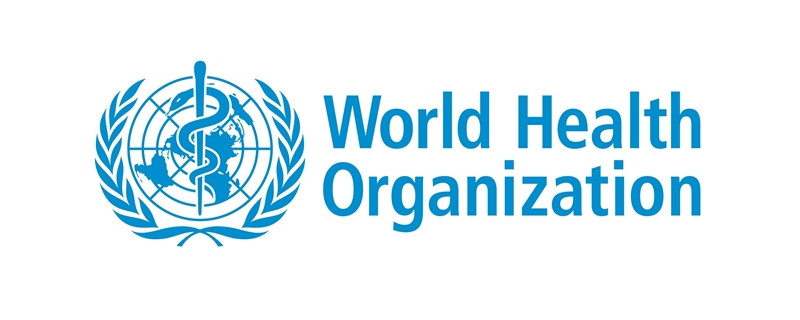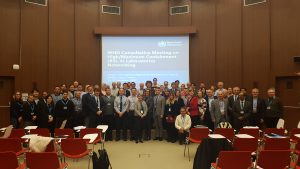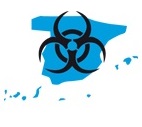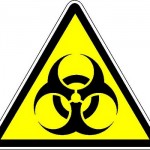Viral comments (36): WHO consultative meeting on high/maximum containment laboratories networking

Laboratories of high biocontainment (BSL3) and maximum biocontainment (BSL4) worldwide represent the highest levels of biological containment, offering great protection for the user, the sample and the environment. There are currently more than 50 maximum containment facilities (BSL4) in the world that handle some of the most dangerous pathogens for human and animal health for research and diagnostic purposes; BSL3 facilities count for many hundreds. Given this global distribution, meetings have been held and networks have been established in the past focused on the concerted efforts of the laboratories within that group. These include the European Network of Laboratories BSL-4 (Euronet-P4) established in 2005, a Workshop on Biosecurity Challenges of the Global Expansion of High Confinement Biological Laboratories held in 2011, and more recently, 2017, a second Workshop China-USA on the challenges of emerging infections, laboratory safety and global health security. Three recurring topics of discussion in these meetings have been:
- How to establish and ensure adequate training,
- The development and maintenance of best practices and
- The importance of collaboration for the advancement of science and in response to a disease outbreak.
Training and safe laboratory practices is also a focus of the High Containment Laboratory Management Group (GOHLD), composed primarily of animal facility directors. These efforts, although significant and constructive, have only served a limited number of BSL4 maximum containment laboratories.
To alleviate this fact, the World Health Organization (WHO) convened a Forum of high and maximum containment facilities between the 13th and 15th of December, in Lion. The goal is to generate interactions and relationships between those responsible for these facilities with the objective of mutual strengthening of laboratories of high and maximum biocontainment throughout the world through collaboration to ensure biosecurity and biosecurity in all facilities.
Biosafety and biosecurity are based on the engineering of the facilities, adequate training of personnel and meticulous supervision. But engineering and training there is a wide range, and the reference, the gold standard, is not clear and can be continent, state or even facility dependent.
In addition, the operational cost of high and maximum biocontainment facilities is a challenge not only for recently opened laboratories, but also for laboratories that have been operating for years. The immense cost and resources that must be devoted to the operation of high/maximum containment facilities can represent a large percentage of the budget of an organization or country and should be taken into account for the expansion and development of future facilities. Finally, public perception, affected by cultural and social aspects, can have a significant influence on the opening and continuous use of BSL-4 laboratories in some countries.
In particular, the specific objectives in this Forum were:
- Bilateral or multi-lateral collaboration of BSL4 laboratories around the world, with the WHO as facilitator partner, on the common mission of laboratory strengthening to maintain biosafety and biosecurity measures.
- A discussion of best practices employed at facilities and the identification of a mechanism for sharing and disseminating this information to other BSL4 and BSL3 laboratories.
- Reviewing the challenges faced by these facilities that should be considered for development, expansion, and maintenance of facilities in addition to the measures employed to overcome these obstacles.
- Discussion of the importance that oversight has in earning the confidence of the global community and what can be done to strengthen relationships between regulators and scientists, to allow scientific progress while maintaining biosafety.
- Addressing the perceived risk by communities with BSL4 and BSL3 facilities and what can be done to mitigate these concerns through outreach.
- The consideration of establishing a system for material transfer between labs that have demonstrated competence in both biosafety and biosecurity
- Exploring the possibility of forming an international review mechanism for providing international recognition of new BSL4 facilities through on site observation and guidance.
- Offer a Knowledge platform to the planned and newly developed BSL4 and BSL3 facilities to ensure the success and safe operation of these laboratories.
- Exploring the benefit of creating a database on empirical data collected on the testing of decontamination and disinfection methods, validation of critical systems, suit strength, and other qualitative data on safety.
“These are objectives that will have to be evaluated in the long term, since they are impossible to achieve in that first Forum”, says Xavier Abad, who has attended as Director of the Biocontainment Unit on behalf of IRTA-CReSA. As a high containment facility, IRTA-CReSA has participated in this Forum, at the invitation of WHO, presenting a communication about the CReSA facility operation, and how it can be a platform for the research on high-risk pathogens, their respective animal models and the utility thereof for testing new vaccines or therapies.
The constitution of a professional network, and more one on a critical and sensitive issue like this, to exchange knowledge and standardize procedures, is always good news. That this net gives the expected results, that, that’s another story. That we will tell in time.














